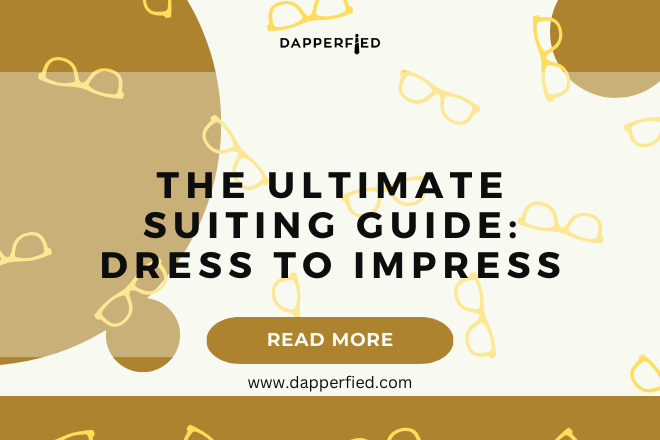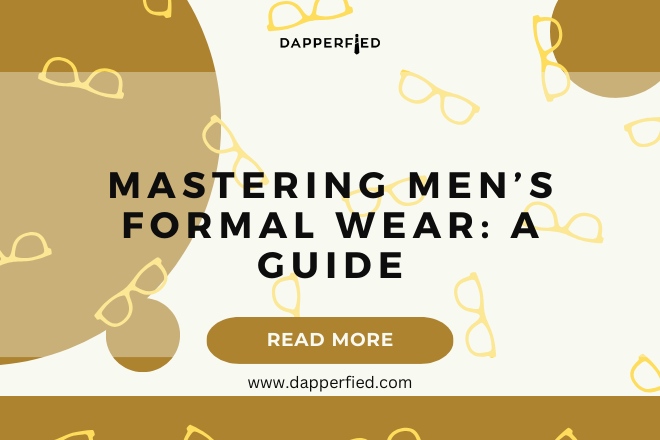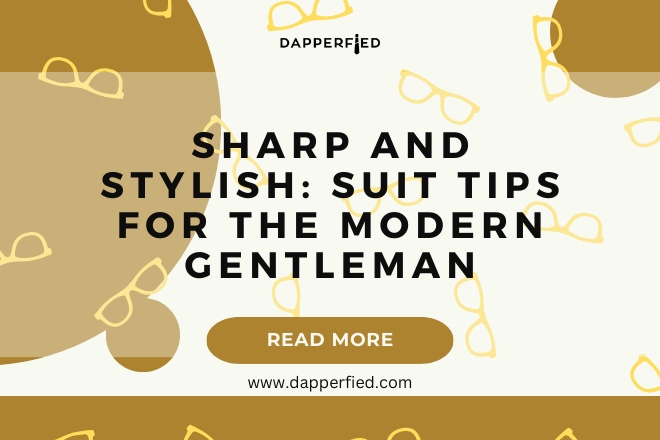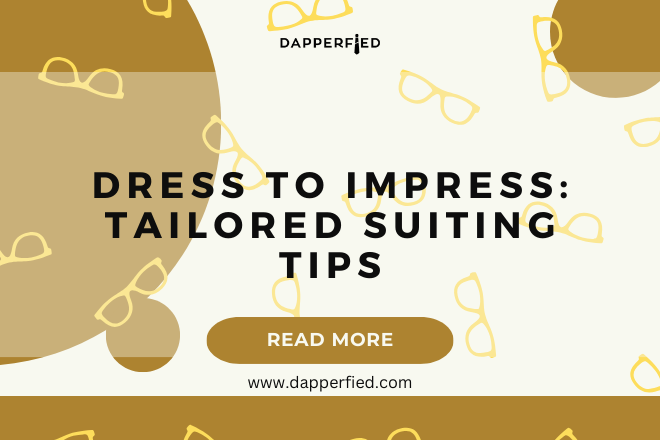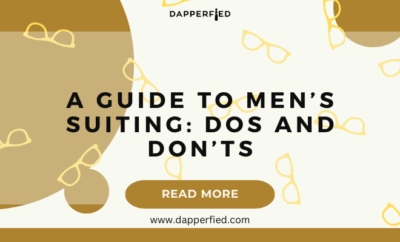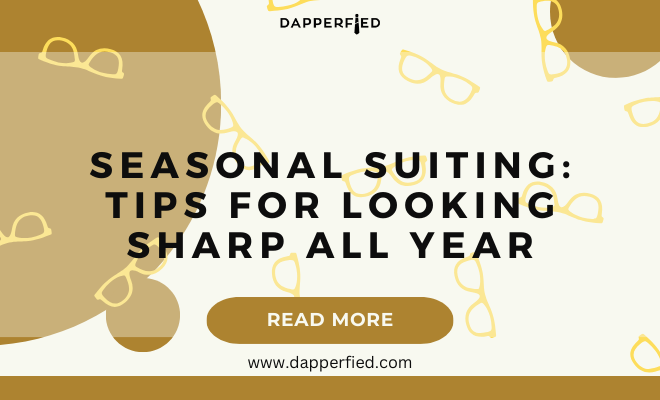
Men's Style
Seasonal Suiting: Tips for Looking Sharp All Year
Seasonal suiting is the practice of choosing suits that are appropriate for the weather and occasion. It is important to consider these factors when selecting a suit, as it can greatly impact your comfort and overall style. Whether you are attending a wedding, going to a job interview, or simply dressing up for a casual event, choosing the right suit for the season is crucial.
Key Takeaways
- Seasonal suiting requires different fabrics and styles for each season
- When selecting a suit, consider the occasion and dress code
- A tailored suit ensures the perfect fit for any body type
- Look for quality materials and attention to detail when shopping for a suit
- Dress appropriately for black tie events with a classic tuxedo or formal suit
Suit Selection Tips for Every Season
When it comes to selecting a suit for each season, there are a few key factors to consider. First and foremost, the fabric of the suit is important. For spring and summer, lightweight fabrics such as linen or cotton are ideal as they are breathable and help to keep you cool in warmer temperatures. In contrast, for fall and winter, heavier fabrics like wool or tweed provide warmth and insulation.
In terms of style, there are various options to choose from. For formal occasions, a single-breasted suit is a classic choice that works well for most body types. Double-breasted suits are more formal and can add a touch of elegance to your look. Three-piece suits are another option that can be worn for both formal and casual events, providing versatility and sophistication.
Men’s Suiting Styles for Every Occasion
When it comes to choosing the right suit style for different occasions, it is important to consider both the dress code and your body type. For formal events such as weddings or black tie affairs, a single-breasted suit is typically the most appropriate choice. It offers a timeless and elegant look that can be easily accessorized with a bow tie or pocket square.
For job interviews or business meetings, a single-breasted suit in a neutral color such as navy or charcoal gray is a safe bet. This style is professional and versatile, allowing you to make a good impression without being too flashy.
For more casual events or everyday wear, a double-breasted suit or a three-piece suit can add a touch of sophistication and style. These styles can be dressed up or down depending on the occasion, making them a versatile choice for any event.
Tailored Suit Guide: How to Get the Perfect Fit
| Measurement | Ideal Range | Acceptable Range |
|---|---|---|
| Chest | 36-40 inches | 34-42 inches |
| Waist | 30-34 inches | 28-36 inches |
| Hip | 36-40 inches | 34-42 inches |
| Shoulder | 17-19 inches | 16-20 inches |
| Sleeve Length | 32-34 inches | 30-36 inches |
| Pant Length | 30-32 inches | 28-34 inches |
| Thigh | 22-24 inches | 20-26 inches |
| Inseam | 30-32 inches | 28-34 inches |
One of the most important aspects of wearing a suit is ensuring that it fits properly. A well-tailored suit can make all the difference in your overall appearance and confidence. When getting a suit tailored, there are a few key areas to focus on.
First, pay attention to the shoulders. The shoulder seams should align with your natural shoulder line, creating a clean and polished look. Next, consider the length of the jacket. It should cover your buttocks and end just above the bend of your thumb when your arms are at your sides.
The sleeves should be long enough to show about half an inch of shirt cuff when your arms are relaxed. The waist of the jacket should be fitted but not too tight, allowing for ease of movement. Finally, the trousers should have a clean break at the top of your shoes and fit comfortably around the waist and hips.
Suit Buying Tips: What to Look for When Shopping
When shopping for a suit, there are several factors to consider to ensure you are getting a quality garment that fits your budget. First and foremost, pay attention to the fabric. Look for suits made from natural fibers such as wool or cotton, as they tend to be more breathable and durable.
Next, examine the construction of the suit. Check for strong stitching and well-finished seams. The lining should be smooth and well-attached to the jacket. Pay attention to details such as buttons and lapels, as these can greatly impact the overall look of the suit.
When it comes to budget, it is possible to find affordable suits that still offer quality and style. Look for sales or discounts at reputable retailers, or consider purchasing a suit during off-season sales. Additionally, consider investing in a few key pieces that can be mixed and matched to create multiple outfits, rather than buying a new suit for every occasion.
Men’s Formal Wear: Dressing for Black Tie Events

Black tie events require a specific dress code that is more formal than everyday wear. When dressing for a black tie event, it is important to choose the right suit and accessories to ensure you are appropriately dressed.
For black tie events, a tuxedo is the most appropriate choice. A tuxedo typically consists of a black or midnight blue jacket with satin lapels, matching trousers with a satin stripe down the side, and a formal shirt with a wing collar. It is typically worn with a bow tie and patent leather shoes.

For white tie events, which are even more formal than black tie, a tailcoat is required. A tailcoat is a black coat with long tails at the back, worn with matching trousers, a white wing collar shirt, and a white bow tie. It is typically worn with patent leather shoes and white gloves.
Spring Suiting: Light Fabrics and Bright Colors
Spring is a season of renewal and rebirth, and your wardrobe should reflect that. When it comes to spring suiting, light fabrics and bright colors are the way to go.
For spring suits, lightweight fabrics such as linen or cotton are ideal. These fabrics are breathable and help to keep you cool in warmer temperatures. They also have a relaxed and casual feel that is perfect for the season.
In terms of colors, spring is all about embracing brighter hues. Pastel shades such as light blue, mint green, or pale pink are popular choices for spring suits. These colors add a touch of freshness and vibrancy to your look.
When styling a spring suit, consider pairing it with a crisp white shirt and a patterned tie in complementary colors. Finish off the look with a pair of brown or tan leather shoes for a polished and put-together appearance.
Summer Suiting: Breathable Fabrics and Casual Styles
Summer is a season of heat and humidity, and your suit should be able to withstand these conditions. When it comes to summer suiting, breathable fabrics and casual styles are key.
For summer suits, lightweight fabrics such as linen or seersucker are ideal. These fabrics are known for their breathability and ability to keep you cool in hot weather. They also have a relaxed and casual feel that is perfect for the season.
In terms of style, consider opting for a more casual suit such as a cotton or linen blend in a lighter color. Light gray or khaki are popular choices for summer suits, as they reflect the sun’s rays and help to keep you cool.
When dressing up a summer suit for a formal occasion, pair it with a crisp white shirt and a silk tie in a complementary color. For a more casual look, opt for a patterned shirt or a polo shirt instead. Finish off the look with a pair of loafers or canvas sneakers for a laid-back and stylish appearance.
Fall Suiting: Rich Fabrics and Earthy Tones
Fall is a season of change and transition, and your wardrobe should reflect that. When it comes to fall suiting, rich fabrics and earthy tones are the way to go.

For fall suits, heavier fabrics such as wool or tweed are ideal. These fabrics provide warmth and insulation, making them perfect for cooler temperatures. They also have a luxurious and sophisticated feel that is perfect for the season.
In terms of colors, fall is all about embracing earthy tones. Shades such as brown, olive green, or burgundy are popular choices for fall suits. These colors add a touch of warmth and richness to your look.
When styling a fall suit, consider layering it with a sweater or a cardigan for added warmth and style. Pair it with a patterned shirt in complementary colors and finish off the look with a pair of leather boots for a rugged and masculine appearance.
Winter Suiting: Warm Fabrics and Layering Techniques
Winter is a season of cold and snow, and your suit should be able to withstand these conditions. When it comes to winter suiting, warm fabrics and layering techniques are key.
For winter suits, heavier fabrics such as wool or cashmere are ideal. These fabrics provide warmth and insulation, making them perfect for colder temperatures. They also have a luxurious and elegant feel that is perfect for the season.
In terms of layering, consider adding a waistcoat or a cardigan underneath your suit jacket for added warmth and style. Pair it with a patterned shirt in complementary colors and finish off the look with a pair of leather boots or dress shoes for a polished and sophisticated appearance.
In conclusion, seasonal suiting is an important aspect of men’s fashion that should not be overlooked. By considering the weather and occasion when choosing a suit, you can ensure that you are both comfortable and stylish. Whether you are dressing for spring, summer, fall, or winter, there are various fabrics, styles, and colors to choose from that will suit your needs. By following the tips outlined in this article, you can confidently select the perfect suit for any occasion and make a lasting impression. So go ahead and experiment with different suit styles and fabrics for each season – you won’t be disappointed!
If you’re looking for more style inspiration and tips on suiting, be sure to check out Chris Keaton’s article on Dapperfied titled “Gentlemen, Be Bold: Part 2”. In this article, Keaton shares valuable insights on how to make a statement with your wardrobe choices. Whether you’re interested in slim suits or three-piece suits, Dapperfied has got you covered. For more information on the slim suit trend and what’s buzzing in the fashion world, head over to their article “The Slim Suit: What’s the Buzz?”. And if you’re curious about the ins and outs of men’s three-piece suits, don’t miss their informative piece titled “Men’s Three-Piece Suit: What You Should Know”. Happy suiting!
FAQs
What are seasonal suiting tips?
Seasonal suiting tips are guidelines on how to dress appropriately for different seasons of the year. These tips include choosing the right fabrics, colors, and styles that are suitable for the weather and occasion.
What fabrics are suitable for summer suiting?
Fabrics that are suitable for summer suiting include lightweight and breathable materials such as cotton, linen, and seersucker. These fabrics allow air to circulate and keep you cool in hot weather.
What colors are appropriate for fall suiting?
Colors that are appropriate for fall suiting include earthy tones such as brown, olive, and burgundy. These colors complement the changing colors of the leaves and create a warm and cozy look.
What styles are suitable for winter suiting?
Styles that are suitable for winter suiting include heavier fabrics such as wool and tweed. These fabrics provide warmth and insulation in cold weather. Additionally, layering is important in winter suiting to keep you warm and stylish.
What accessories can enhance a seasonal suit?
Accessories that can enhance a seasonal suit include scarves, hats, and gloves in winter, and pocket squares and ties in summer. These accessories add a pop of color and texture to your outfit and can elevate your overall look.

